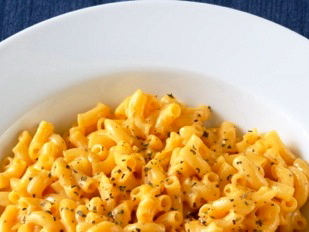
reference-image, l
(article, Caroline Cummins)
[%pageBreakSettings nobreak=true] In his bestselling cookbook How to Cook Everything (Completely Revised 10th Anniversary Edition), Mark Bittman exhorted readers to stop ordering takeout and start cooking. Why? Well, for one, home cooking is cheaper. For two, it's just as fast as waiting for that pizza to show up. And for three, if you're of the right mindset, it's simply more fun. "Fun," however, is not a word Peg Bracken likes in the kitchen. In 1960, Bracken had a bestselling cookbook of her own, the I Hate to Cook Book, written for all the harried housewives and incipient career moms of the day. "This book," Bracken wrote in the introduction, "is for those of us . . . who have learned, through hard experience, that some activities become no less painful through repetition: childbearing, paying taxes, cooking." In his book The Solace of Food, Robert Clark calls Bracken's book "a smart-aleck, plague-on-both-your-houses rejoinder to both home economists and gourmets." The book, he adds, sold nearly three million copies. "For Bracken, cooking was neither interesting nor fun," Clark laments. "Bracken's food was good enough to keep a woman's husband and kids out of her hair — and no more than that." [%image reference-image float=left width=350 caption="How hard is it, really, to make pasta with cheese?" credit="Photo: iStockphoto/Altonappw"] It's true that many of Bracken's recipes rely on cans of soup and packets of onion powder. But then, plenty of folks cooked that way then, and for that matter, plenty of folks cook that way now. Is a box of little quiches from Trader Joe's really an improvement over a Swanson's TV dinner? (OK, so maybe there's fewer preservatives in the quiches, and maybe they're even organic, but still.) Some convenience foods are just that; canned tomatoes and stock, for example, are perfectly serviceable kitchen staples and save hours of labor. But how many of us rely on Annie's mac'n'cheese when it's just as fast to boil a handful of spaghetti and grate fresh cheese? Even Bracken knew this; her recipe for Fettuccine Alfredo skips the cream and calls for nothing more than egg noodles, butter, and Parmesan. Heck, she even tells you to grate the stuff yourself instead of buying that can of pregrated fluff. Somehow we still believe that all packaged goods marketed as "convenience" foods really are convenient, saving us time and money, when often they do neither. But when we don't know how to cook, we think these products will do the job for us. And people who do cook from scratch? Well, they must just have lots of time and money. Cooking, in this world view, is for the elite. Convenience foods are for the rest of us. Martha Stewart has built an empire on the premise that time and money do not exist, that every woman everywhere is capable of creating the perfect soufflé and handstitched pocketbook. But Stewart's latest offering, Blueprint, is a magazine aimed at a younger, trendier, and apparently kitchen-klutzy woman. Gone is the presumption of intelligence, replaced instead with earnest how-tos that could use a serious dose of Peg Bracken wit. In the March/April issue of Blueprint, for example, a handful of nutrition professionals (all women) assert that the best way to eat breakfast is via low-fat convenience foods. New York City nutritionist Cindy Sherwin endorses Cabot's 50-Percent Light Cheddar Cheese. "I've tasted a lot of light cheese, and I like this one the best," she declares. (Perhaps it's the lesser of many evils?) Pennsylvania nutrition professor Lisa Hark says she eats almond butter on whole-wheat bread for breakfast. Her preferred bread? Pepperidge Farm. Meanwhile, Oregon dietician Elizabeth Somer reveals what she whips up for her family on weekends: pancakes or waffles made with Light Bisquick, omega-3 fortified eggs, and a quarter-cup of toasted wheat germ. OK, so the eggs and germ are fine, but the Bisquick? And Light Bisquick, at that? (A box of Bisquick, by the way, is nothing more than flour, baking soda, salt, sugar — in the form of dextrose — and partially hydrogenated oil. The first four ingredients you should already have at home, and the last you should never have at home. Light Bisquick, to its credit, replaces the hydrogenated stuff with canola oil.) Bittman would shake his head. In his recipe for Basic Pancakes, he writes, "Fast, easy, and fluffy, these pancakes should make you forswear boxed mix forever." A bag of flour is just as easy to buy as a box of Bisquick, and the flour is cheaper and better for you. (You can buy unbleached flour, for example, instead of Bisquick's bleached version.) But after years of Quick Tips and 30-Minute Meals, we no longer think of buying the basics as, well, basic. In fact, despite Bittman's insistence that cooking can be "fun," many of us are inclined to agree with Bracken and shun the word. And maybe the word is wrong. "Fun" suggests play, which only comes with confidence. When you're not confident, it's easy to reach for the box of Bisquick in the belief that it contains powdered confidence. But confidence only comes with knowledge, which cooking with convenience foods doesn't provide. You want to rule your kitchen? The only power recognized there is knowledge, not Knorr-Lipton Alfredo Pasta Sides. And fundamentally, Bracken and Bittman sit on the same side of the stove. As Bittman writes, "Everyday cooking is about preparing good, wholesome, tasty, varied meals for the ones you love . . . Your results need not be perfect to give you this gift, to which all humans are entitled." p(bio). Caroline Cummins is the managing editor of Culinate. *Also on Culinate: Columns on planning for leftovers, shopping for bulk foods, and making a simple salad.

reference-image, l